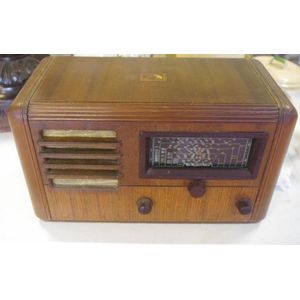Antique and Modern Silver Bottle Tickets with Chains
Two silver bottle tickets, includes one Victorian 'Madeira' with grapevine border. Birmingham 1844 by Joseph Willmore and 'Gin', the scrolling foliage border including thistles. Birmingham 1992 by W.I. Broadway & Co. Both with chains.
You must be a subscriber, and be logged in to view price and dealer details.
Subscribe Now to view actual auction price for this item
When you subscribe, you have the option of setting the currency in which to display prices to $Au, $US, $NZ or Stg.
This item has been sold, and the description, image and price are for reference purposes only.
- Victorian Period - The Victorian period of furniture and decorative arts design covers the reign of Queen Victoria from 1837 to 1901. There was not one dominant style of furniture in the Victorian period. Designers used and modified many historical styles such as Gothic, Tudor, Elizabethan, English Rococo, Neoclassical and others, although use of some styles, such as English Rococo and Gothic tended to dominate the furniture manufacture of the period.
The Victorian period was preceded by the Regency and William IV periods, and followed by the Edwardian period, named for Edward VII (1841 ? 1910) who was King of the United Kingdom and the British Dominions and Emperor of India for the brief period from 1901 until his death in 1910. - Grapevine Motif - The grapevine motif is a decorative design that features grapevines, leaves, and grapes and is commonly used in various forms of art and decoration, including jewellery, textiles, pottery, and architecture.
In jewellery, the grapevine motif is often used to create decorative elements such as pins, brooches, necklaces, and bracelets. The design can be executed in a variety of materials, including precious metals such as gold and silver, and can be embellished with gems or enamel.
The grapevine motif is a popular symbol in many cultures, representing abundance, prosperity, and fertility. In ancient times, grapevines were associated with Dionysus, the Greek god of wine and celebration, and were used to decorate wine vessels, temples, and other sacred objects.
In addition to its cultural significance, the grapevine motif is also appreciated for its aesthetic appeal. The intertwining branches and clusters of grapes create a graceful, flowing design that is both beautiful and versatile. Whether used in jewellery, textiles, or other forms of decorative arts, the grapevine motif continues to be a popular and enduring symbol of abundance and prosperity.
This item has been included into following indexes:
Visually similar items

Sold by
in
for
You can display prices in $Au, $US, $NZ or Stg.

A Charles I oak credence table, English, circa 1640, of octagonal outline with curved fluted apron on slender baluster turned legs United with platform base, 84 cm width. Provenance: By Repute purchased from Henry Woods Wilson 1966.
Sold by
in
for
You can display prices in $Au, $US, $NZ or Stg.

Vintage timber cased HMV radio, approx 45 cm wide, 21 cm deep, 26 cm high
Sold by
in
for
You can display prices in $Au, $US, $NZ or Stg.

A white jade pendant Qing dynasty, 19th century carved in the form of a section of bamboo 6.2 cm long
Sold by
in
for
You can display prices in $Au, $US, $NZ or Stg.
